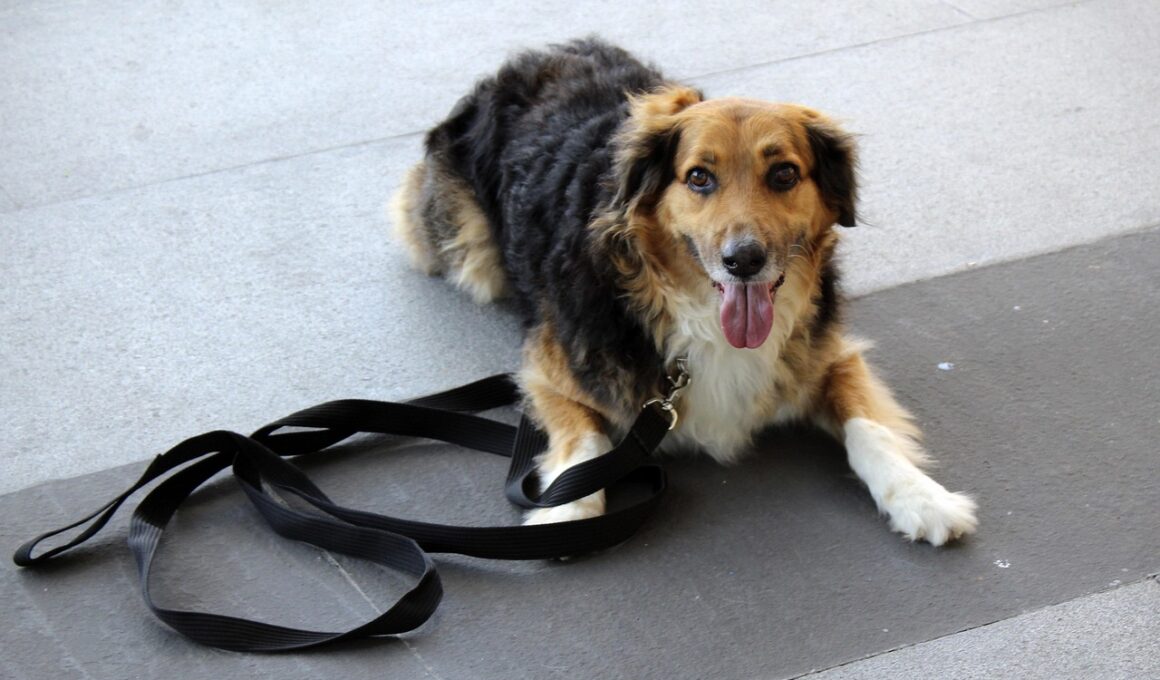Top 10 Commands Every Rescue Dog Should Learn
Training a rescue dog can be an incredibly rewarding experience the first command you should teach is “sit.” This fundamental command is essential for good behavior. It helps you control your dog, especially in public spaces. When your dog is calm while sitting, it eases the stress on both you and your pup. Use treats to encourage compliance with a simple command. As your dog becomes more familiar with sitting, gradually increase periods before rewarding. Another vital command is “stay.” This command teaches your dog to remain stationary until told otherwise, which is especially useful in various situations. Safety is paramount when acclimating your rescue dog to new environments. For example, if you drop something or the door opens unexpectedly, a firm “stay” could prevent mishaps. Additionally, teaching your dog to “come” is crucial for recall during walks. A reliable recall command can protect your dog from potential dangers. Another basic command you can teach your rescue dog is “down,” which promotes relaxation and calmness, helping you have a well-mannered companion. Lastly, you should train your dog to respond to its name. This command strengthens your bond and encourages focus.
Advanced Commands for Your Rescue Dog
As your rescue dog settles into your home, consider training advanced commands like “leave it.” This command proves beneficial while out on walks. Teaching your dog to ignore distractions ensures their safety and encourages focus on you. You can reinforce this command through high-value treats. Recall that consistency and positive reinforcement are vital to success in this training phase. Another advanced command is “heel,” which not only keeps your dog close but also helps in managing their energy levels while walking together. Using a leash during training is essential to help maintain control. An adept “heel” command can make walking enjoyable for you and your rescue dog. The command “drop it” is also crucial; it teaches your dog to release items in their mouth, preventing choking hazards. With rescue dogs, this command is particularly important as they may have a previous inclination towards scavenging. In addition, teaching your dog to “quiet” is significant if barking is an issue. This aids in maintaining a calm environment at home. Lastly, consider teaching “go to bed.” This provides your dog with a safe space while comforting you, making it an essential command.
Practical training methods can significantly enhance your interactions with rescue dogs. Use positive reinforcement such as treats, praises, or toys. This method creates a positive learning environment encouraging good behavior while building trust. Be patient with your dog, as rescue pups may take longer to adjust. Start each training session in a quiet area free from distractions; this helps your dog focus solely on you during these crucial lessons. Consistency is also vital in shaping your dog’s behavior. Use the same
phrases and hand signals for commands to help your dog understand what you expect from them. Avoid frustrating your dog with complex commands too soon; always appreciate small victories. As your dog shows progress, gradually increase the level of difficulty in training. This keeps their interest piqued and promotes enthusiasm for learning. Make training sessions short and options exciting; this ensures that your dog remains engaged without becoming overwhelmed. Lastly, observe your dog’s body language during each training session. Celebrate successes with praise and treats. A dog that feels valued is more likely to remain enthusiastic during training sessions.
Building Your Dog’s Confidence Through Commands
Teaching commands effectively can greatly enhance your rescue dog’s confidence and security. A confident dog is more likely to handle new experiences and environments positively. The command “explore” encourages your dog to engage with their surroundings. Start by introducing them to new sights, smells, and sounds during walks. The command can help your dog become comfortable with unfamiliar environments over time, reinforcing their sense of security. Further, the command “find it” taps into your dog’s natural instincts. Hide treats around the house and encourage them to sniff them out. This builds confidence through exploration and curiosity. Also, utilizing commands like “shake” can enhance bonding while being enjoyable. This fun command builds trust and social skills and strengthens the connection between you and your dog. Additionally, commands such as “touch” entail your dog physically engaging with you through their nose or paw, illustrating the capacity to follow directions. Importantly, always pay close attention and read your dog’s body language—they may be signaling when something is uncomfortable. Reinforce positive behavior with plenty of love, as these moments build your bond, assure your rescue dog, and increase happiness.
Socializing your rescue dog through training commands is essential for their development. Begin with basic commands like “sit” and “down” to establish a solid foundation. Regular practice in varying environments boosts their adaptability. Allowing your dog to interact with other dogs is vital; they learn how to behave and communicate appropriately. Positive experiences in group classes or dog parks build their confidence and teach them how to respond to distractions. Focus on teaching your rescue dog to perform commands regardless of their leisure activities. Consistent social engagement encourages your dog to believe that various settings are safe and enjoyable. Incorporating “meet and greet” into your training routine allows your dog to learn how to behave around newcomers. This crucial step prevents potential aggression towards strangers or other pets. Moreover, take time to teach your dog patterns in social interaction by observing your cues as they develop more significant communication skills. Consistency in your interactions will build comfort and help your dog understand how to behave appropriately. A well-trained and disguised rescue dog often becomes a well-adjusted family member that adapts well to family life and transitions seamlessly into different social settings.
Importance of Consistency in Dog Training
The significance of consistency in training cannot be overstated as it solidifies the learning curve for any dog. A rescue dog may take time to trust you and your commands; offering clear, relatable cues is essential in this training process. Use the same words and gestures for specific commands to prevent any confusion. Ensure that every family member training your dog uses unified methods to reinforce the same behavior. Setting a consistent schedule for training sessions can also optimize learning opportunities for your dog. Short, daily commands can be more effective than longer, drawn-out sessions. Using a calendar can help maintain consistent practices. Praise your dog enthusiastically for following commands. This positivity encourages your rescue dog to obey commands as they associate tasks with rewards. Furthermore, recognizing when your commands are not effective is also crucial. Adjust your training methods based on your dog’s personality and preferences. Be patient if your rescue dog struggles with a command; they may have various past experiences affecting their training potential. Choose commands that resonate with your dog’s abilities, and tailor your approach for the most efficient learning process.
Finally, remember to shower your rescue dog with love and patience while training. Reinforcement through affection is instrumental in completing the various commands taught. Positive emotions during training help to bond you and your dog, fostering an environment of mutual respect and understanding. Building trust leads to a more responsive and eager learner. You will find that the more emotionally connected your dog feels, the more responsive they are to commands. You should celebrate all successes, whether small or large, providing timely praises and treats to encourage further compliance. Be mindful of the tone used when praising or correcting behavior; dogs can sense your emotions and respond accordingly. Keeping a positive and consistent approach throughout the entire training process is vital. Keeping up motivation levels for both you and your rescue dog will make the experience more enjoyable. Regular breaks should be incorporated into training sessions to prevent boredom and overstimulation for your dog. With dedication and effort, you’re likely to see significant improvements in your dog’s behavior, resulting in a happy, well-trained companion ready to explore the world alongside you.


